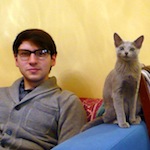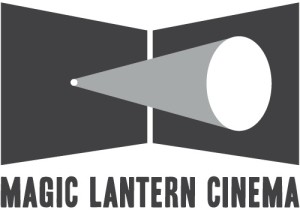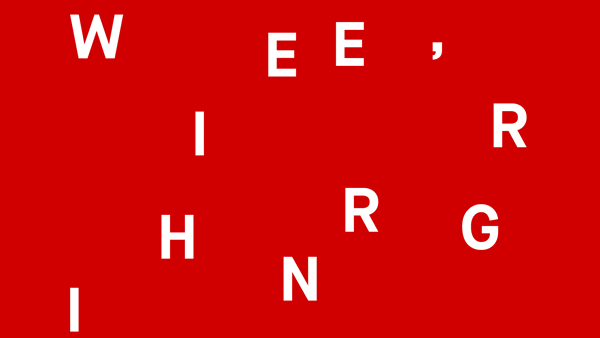It is known that crowd scenes in the cinema produce a rhythmic, poetic, photogenic effect when there is a real, actively thinking crowd involved. The reason is that the cinema can pick this cadence up better than the human eye and by other means; it can record this fundamental rhythm and its harmonics.—Jean Epstein
From the earliest Lumière actualities to the contemporary disaster film, cinema has given apt expression to masses and what they seemingly do best: massing. This program presents a survey of crowds, masses, and swarms in their many and varied manifestations: from the elemental to the complex, and from the archaic to the contemporary. Though often hidden beneath a veneer of solidity, masses and swarms are the very stuff of life. Gathering and dispersing, contracting and expanding, are the formal figures most proper to them. They exist at the level of particles and parades, demonstrations and desktop icons, spermatozoa and shopping mallers. Even the grain of film, the noise of video, the pixilation of a buffering stream—they, too, with their swirling and spreading, justly merit the name of “crowd.” Wherever division, multiplicity, and movement co-exist, masses and swarms are sure to follow: on the street, in the density of a throng; in the depths of the body, cell against cell.
Featuring works by Bray Animation Studios, Monica Duncan, Leonard M. Henny, JODI, Karl Kels, Rick Liss, Len Lye, Marie Menken, Chris Oakley, Alice Anne Parker, Hans Richter.
Curated by Seth Watter.
Program
How We Breathe, Bray Studios, 1920, 8 min, b&w/silent, 35mm to digital video
Vintage educational animation from Bray Studios (Colonel Heeza Liar, Krazy Kat), detailing the working of respiration in cellular organisms. Courtesy of the Prelinger Archive.
Particles in Space, Len Lye, 1979, 4 min, b&w/sound, 16mm
A sequel of sorts to Free Radicals (1958), Lye’s last completed film was made by scratching directly on black film leader. Set to the rhythms of African drumming, its tornado-like vortices and insectoid swarms create the illusion of depth through their infectious movement.
Starlings, Karl Kels, 1991, 9 min, b&w/silent, 16mm
Starlings delivers on the promise of its title: the film is indeed a static shot of a massive flock of starlings as they stream across the starry night. But Kels has put the original film through a series of print generations, causing the image to progressively deteriorate as it loses resolution. The different prints are edited together, metrically, to create a pulsating rhythm. The continuity of the original event is maintained, even as the starlings fade in and out of visibility, often dissolving into a mere pattern of grain.
Hurry! Hurry!, Marie Menken, 1957, 3 min, color/sound, 16mm
A most unusual work by Menken—best remembered as a pioneer of the lyrical and diaristic modes of avant-garde filmmaking—Hurry! Hurry! layers micrographic footage of spermatozoa with the dancing rhythms of fire, while the soundtrack is culled from a stock recording of aerial bombardments. Brakhage speculated that a lone and struggling spermatozoon could be read as a stand-in for Menken’s wayward husband, poet-filmmaker Willard Maas.
Animals Running, Alice Anne Parker (Severson), 1974, 23 min, b&w/sound, 16mm
Animals Running is one of the last works by Anne Severson, a feminist filmmaker who gained notoriety for her shockingly blunt, gynecological expose titled Near the Big Chakra (1971). Animals Running is “[a] serenely beautiful … study of animal life in continual movement—bees swarming, birds in flight, deer running… like a series of engravings come to life” (LA Times). Severson changed her name to Alice Anne Parker and is now Hawaii’s best-known psychic, having authored several popular books on dream interpretation.
Everything Turns, Hans Richter, Everything Revolves, 1929, 3.5 min, b&w/sound, 16mm
In Richter’s first sound film, the great Dadaist applies all his trademark techniques to the representation of a carnival spectacle. Plates are juggled, things are precariously balanced, a great he-man type struts across the stage and onto the ceiling. Reflections in distorted mirrors, slow-motion, freeze frames, negative printing, elaborate superimpositions, and fragmented bodies abound.
Black Power: We’re Goin Survive America, Leonard M. Henny, 1968, 15 min, color/sound, 16mm
Vintage footage of Stokely Carmichael delivering a powerful speech in Oakland on the occasion of a merger between the Student Non-Violent Coordinating Committee and the Black Panther Party, intercut with the performances of several dance troupes. It was also the birthday of Huey Newton, then being held for the shooting of a police officer.
N.Y.C. (No York City), Rick Liss, 1983, 6 min, color/sound, 16mm on DVD
From the ocean to the MoMA, from the subway to the park, the city explodes in a staccato assault of single-frames, propelled by the filmmaker’s near-continuous forward motion—both pedestrian and vehicular—through the urban throng. Music by Laurie Anderson and Jeff Meyer.
The Catalogue, Chris Oakley, 2004, 5.5 min, color/sound, digital video
In what appears to be standard surveillance footage of a shopping mall’s interior, a computer program proceeds to “tag” each individual patron as a numbered entity. Using motion tracking to follow them through a crowd, the program displays their entrance and exit times, purchase history and preferences, skin color, health statistics, and other details relevant to the perfection of consumerism.
My Desktop, JODI, 2007, 8 min, color/sound, DVD
Documentation of an Apple desktop performance. Hundreds of icons are mercilessly copy-and-pasted, too many folders closed at once, widgets proliferate, and no work is accomplished.
Hundred Hands, Monica Duncan, 2005, 2 min, b&w/sound, DVD
A beautifully simple and concise meditation on gesture and repetition, using image feedback, luminance keying, and frame buffering to create the illusion of a monstrous, hundred-handed creature erupting from within the body’s interior.


 Seth Watter is a doctoral candidate in Modern Culture & Media at Brown University and a co-director of Magic Lantern Cinema, an experimental film and video series based in Providence, RI. His writing is forthcoming in Camera Obscura 90.
Seth Watter is a doctoral candidate in Modern Culture & Media at Brown University and a co-director of Magic Lantern Cinema, an experimental film and video series based in Providence, RI. His writing is forthcoming in Camera Obscura 90.




